X-COM Franchise Retrospective (Part Two)
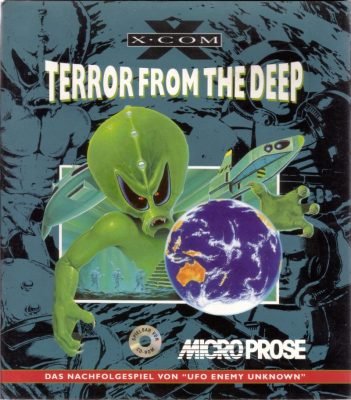 By Patrick S. Baker
By Patrick S. Baker
X-COM: Terror from the Deep
With copies of the first X-COM game flying off the shelves, MicroProse, now merged with Spectrum Holobyte to form MicroProse, Inc., wanted a sequel to the game in just six months. The Gollop brothers hesitated at this proposal, declaring that all could be done in this timeframe was changing sprites and re-using the original code.
So, instead of developing the sequel the Gollops licensed the game code to MicroProse, that would produce the sequel, named X-COM: Terror from the Deep, in-house. Meanwhile, the Gollops went to work on what would become the third game in the series.
Terror was released on 1 June 1995 for DOS PCs and then ported to the PlayStation the next year. The game tells the story of the Second Alien War, some forty years after the First Alien War. Following the destruction of the Alien Brain on Mars, extraterrestrials under the Earth’s seas awaken after millions of years. These new aliens begin to terrorize ships and ports, and abducting humans. The X-COM organization is revived to fight this new alien menace from the deep.
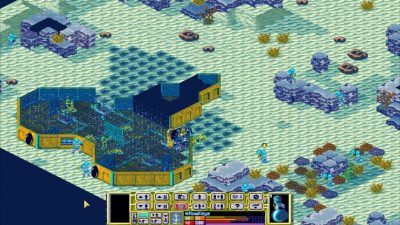
Terror was generally well received by reviewers. PC Gamer UK said that it was “not only a great sequel to UFO, but a superb game in its own right.” Computer Game Review also gave it three rave reviews, a rare “Platinum Triad”. However, others were less impressed. GameSpot said that “apart from new art and a handful of new combat options, this is exactly the same game…” as the first, only much more difficult. Next Generation thought much the same as GameSpot: “X-COM 2 [aka Terror from the Deep] is still a phenomenal game…[but] so much more could have been accomplished to make this game more than just a carbon copy…” of the first game.
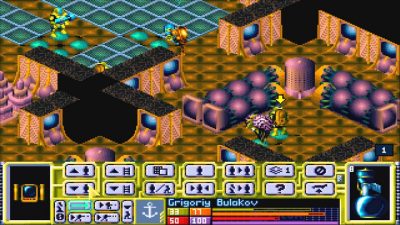
Julian Gollop didn’t think much of Terror, saying: “The graphics were quite impressive, but …they [MicroProse] made a mistake trying to expand the scope of the game by making the missions bigger and longer”. Gollop also said, MicroProse made “some classic mistakes in turn-based games, which is to make the difficulty too tough and the levels too big…” Still, Terror sold very well, and by March 1997 the two X-COM games had sold more than a million copies combined.
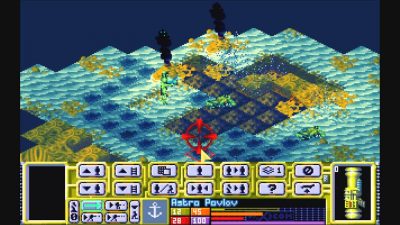
Further, in what may have been a first for a video game, X-COM was novelized into X-COM: UFO Defense – A Novel by Diane Duane which was published in 1995. Another novelization, titled Enemy Unknown, was written in Russian by Vladimir Vasilyev and published in Russia in 1997.
X-COM: Apocalypse
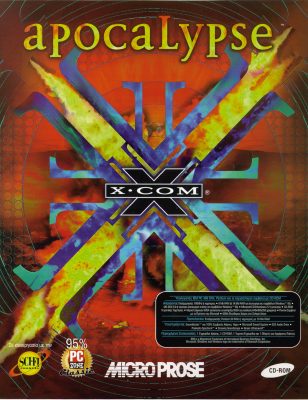
While MicroProse worked on Terror from the Deep, the Mythos team worked on the third installment of the series which became X-COM: Apocalypse. Apocalypse would be the final game in the series with which the Brothers Gollop would be involved.
Released on 30 June 1997, Apocalypse is set 50 years after Terror. The game takes place wholly in Mega-Primus, the first self-contained human megalopolis. The strategic level is called the Cityscape and the tactical level is the Battlescape. Apocalypse featured a revised interface with new graphics. The new alien threat is a race of extradimensional beings that use wormholes to attack the city. The game was far more complex than the first two and included both turn-based and real-time combat.
Mythos developed the game while MicroProse created the graphics. Julian Gollop termed the relationship “disastrous”. He also said Apocalypse itself “…was a disaster area. … Just about everything that could go wrong did go wrong…” Ultimately, Julian declared that he regretted not agreeing to develop Terror from The Deep instead of Apocalypse.
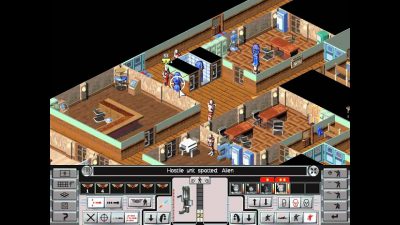
Apocalypse received decidedly mixed reviews. GameSpot said the designers “did a great job”, but criticized the cartoonish “almost humorous tone” and said that the game had a disappointing ending. Next Generation stated “it’s enjoyable, and well-worth the investment. . .but not what it could have been.”
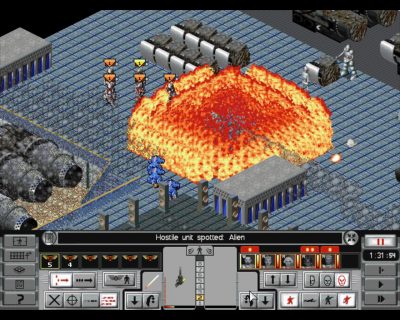
Despite the less than stellar reviews, Apocalypse still sold well. By July 1997, the game had shipped 120,000 units worldwide. One research firm estimated almost 33,000 units were sold in July 1997 alone.
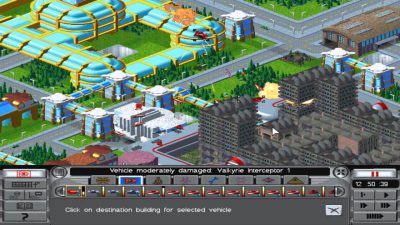
The Gollops Depart
After the rancor between the Gollops and MicroProse over Apocalypse, the brothers decide they would no longer work with that company. Also, MicroProse’s parent company, Spectrum Holobyte, was being acquired by Hasbro, which already had a poor reputation with game developers. So instead of continuing to work with MicroProse, the Gollops inked a development deal with Virgin Interactive, but left the valuable intellectual property that was X-COM with MicroProse. At the time there was some debate over who exactly owned the license. Eventually the Gollops and MicroProse made a deal where the brothers got an increased royalty rate for Apocalypse, and MicroProse would get the license.
The relationship between Mythos and MicroProse had been profitable for both teams, with the Gollops earning at least 2 million British Pounds in royalties for the three X-COM games before moving on. With MicroProse now sole owner of the property, the company pushed ahead with developing more sequels.
Patrick S. Baker is a former US Army Field Artillery officer and retired Department of Defense employee. He has advanced degrees in History and Political Science. He continues to use all his education and experience to play more games and annoy his family.
